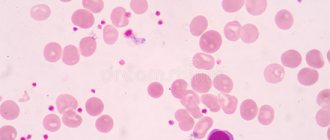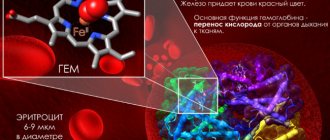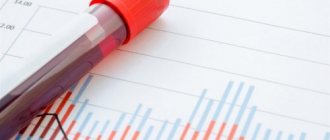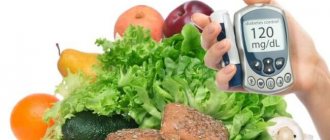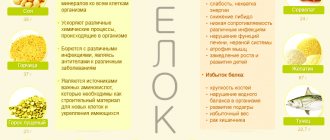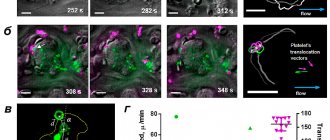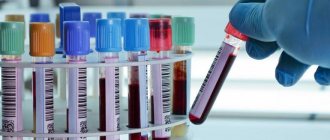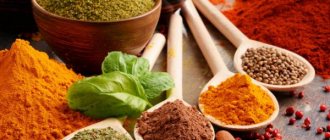Symptoms of thrombocytopenia
Thrombocytopenia, as a rule, does not manifest itself with any characteristic symptoms. This pathology is most often discovered by chance, when performing a blood test in connection with a completely different disease or a routine examination. But we can still highlight its most common manifestations:
• bleeding from the gums;
• nosebleeds;
• heavy menstruation, possible bleeding between them;
• the presence of petichiae, which are flat red spots on the skin the size of a pinhead, most often they are observed on the legs and feet, sometimes forming groups;
• presence of ecchymoses, i.e. bleeding inside the skin that is blue or purple in color, later changing to yellow or greenish, and looks like a bruise.
Thrombocytopenia, which occurs in severe form, can cause large blood loss in injuries. If the number of platelets in the blood is higher than or equal to 50,000/μl, then hemorrhages do not occur when tissue is damaged. If their content drops to 10,000 - 20,000/µl, then there is a threat of spontaneous bleeding.
Minor hemorrhages can also occur when the platelet count is high enough, these include bleeding from the gums and nose.
RESPONSIBILITY
the registry ÑгогогоÑмонР° â коÑÑизона. RESULTS е, еÑли Ñ Ð¿Ð°Ñ¸ÐµÐ½Ñа ÑÑомбоÑиÑопенР¸Ñ поÑле ÑимиоÑеÑапии.
RESULTS registry ½Ð¾ÑÑÑ › а ÑÑомбоÑиÑов. RESULTS ROOM °ÐµÑ дейÑÑвие иммÑниÑеÑа, коÑоÑÑй и Ñак пÑак ÑиÑеÑки оÑÑÑÑÑÑвÑÐµÑ Ñ ÑÐ°ÐºÐ¸Ñ Ð»Ñдей.
RESEARCH, RESEARCH, RESEARCH °ÑаллелÑно with the елÑно. RESULTS 4-6 RESULTS , ROCK 2 пµÑеÑÑва.
RESULTS AND RESPONSIBILITIES леÑении ÑÑомбоÑиÑоп ении. RESULTS RESULTS, RESULTS ¾Ð³Ð¾ мозга. RESULTS RESULTS, ASSESSMENTS ¸Ð»Ð»ÑÑов и Ð¼ÐµÐ»ÐºÐ¸Ñ ÑоÑÑдов.
RESPONSIBILITY AND RESPONSE RESULTS ÐºÑ Ð¼Ð¾Ð»Ð¾ÐºÐ¸ оÑеÑа. RESULTS, RESULTS ¾ÑÑÑанавливаÑÑее и ÑегенеÑаÑивное дейÑÑвР¸Ðµ, ноÑмалР¸Ð·ÑÐµÑ ÑиÑло ÑÑомбоÑиÑов в кÑови и дÑÑÐ³Ð¸Ñ ÐºÐ»Ð µÑок. RESULTS ASSURANCE. RESULTS, ROOM ASSURANCE.
ROOM ½ÐµÐºÐ¾ÑоÑÑм болÑнÑм Ñ ÑÑомбоÑиÑопенией. RESULTS.
ROOM µÐ½ÐºÐ¸) â Ñп¾Ñоб, к коÑоÑÐ¾Ð¼Ñ Ð¿Ñиб RESULTS, RESULTS µÐ½Ð½Ñе ÑпоÑÐ¾Ð±Ñ Ð½Ðµ даÑÑ ÑезÑлÑÑаÑа.
Treatment of thrombocytopenia
• Prednisone. This drug belongs to the class of steroids and has some similarities with another hormone - cortisone. It has a large number of indications, one of which is immune thrombocytopenic purpura. The positive effect in this case is due to the calming effect of prednisone on an overactive immune system, which can provoke an excessive increase in the number of platelets. The use of this drug by patients with HIV infection is problematic, since it suppresses the already reduced activity of their immune system.
• Gamma globulin. This drug is usually used in combination with prednisone, but can also be prescribed as an independent drug. Its drip administration is carried out over 4-6 hours, once every 1-3 days.
• Anti D globulin is prescribed only to some patients suffering from thrombocytopenic purpura. It is used in the form of intravenous injections, its mechanism of action is that it prevents the destruction of Bizzocero plaques by the spleen.
• Removal of the spleen or splenectomy. In cases where platelets are attacked by autoantibodies, the spleen has to destroy them. It would seem that its removal could help treat immune thrombocytopenic purpura. But this method is used only in extreme cases, when less radical methods of treatment have not brought results.
Medical drugs
The choice of drug and therapeutic regimen depend on the severity of the patient’s condition and his individual characteristics. Drugs that increase PLT in the blood:
- Corticosteroid hormones (Hydrocortisone, Dexamethasone and Prednisolone). Promote the release of blood platelets and slow down the process of their utilization in the spleen.
- Immunostimulants and immunomodulators (Methyluracil, Immunoglobulin, Derinat, etc.). Neutralizes toxins, replenishes missing IgG antibodies, increases the rate of cellular regeneration, and stimulates humoral immunity.
- Hemostatic agents. The group is represented by several types of drugs:
- Antifibrinolytics intended to inhibit the process of fibrinolysis - dissolution of blood clots and resorption of blood clots (Aprotinin, Tranexamic acid, Aminocaproic acid, etc.);
- Coagulants that can increase blood clotting (Vikasol, Menadione sodium bisulfite, Phytomenadione);
- Medicines that reduce vascular permeability (Etamzilat, Rutin).
- General strengthening elixir Sodecor (water-alcohol tincture, including ten medicinal plants).
Synthetic glucocorticoid drugs used in the complex therapy of thrombocytopenia
Most drugs are not prescribed to women during pregnancy due to their teratogenic effects on the fetus. Self-medication of thrombocytopenia is prohibited. The use of medications is allowed only as prescribed by a doctor. Vitamin and mineral supplements should be selected taking into account the presence of magnesium, calcium, zinc, folic acid (B9), cyanocobalamin (B12).
Additionally
Rehabilitation of hematopoietic processes is often carried out after chemotherapy, since the aggressive nature of the treatment negatively affects the composition of the blood. To restore platelet balance, the following are used:
- medications that activate the production of flat blood cells;
- course therapy with recombinant thrombopoietin, a liver hormone that regulates platelet synthesis;
- vitamin B9 (folic acid), which has a regenerating effect on bone and other tissues of the body.
Dietary nutrition is mandatory. The use of traditional medicine is allowed if there are no individual allergies and contraindications from the underlying disease (for the treatment of which a chemotherapy method was used).
Glucocorticoid therapy
The use of glucocorticoids helps to increase platelet levels in the majority of patients. Moreover, the effectiveness of a particular dose can only be determined empirically. Therefore, a dose of 1.5 mg/kg cannot be considered more effective than a dose of 0.5 mg/kg. At the beginning of treatment for an adult patient, the dose of prednisolone is 40-80 mg per day, 15 mg is administered every 6 hours.
Other glucocorticoids do not have clear advantages over prednisolone. For intravenous administration, hydrocortisone should be preferred, which is prescribed at 200-300 mg per day for 3-4 weeks until complete or partial remission occurs. Complete remission means a simultaneous decrease in bleeding and an increase in the number of platelets in the blood. Remission is partial if the bleeding has stopped, but there is no significant increase in the number of platelets in the blood. After achieving remission, the dose of the drug can be quickly reduced - reducing by 5 mg per day and increasing to 30-40 mg. After this, the daily dose is reduced more slowly - 2.5-5 mg per week.
Diet
Dietary ways to increase white blood cells in the blood if they have fallen include proper balanced nutrition and consumption of foods that promote production.
The menu must include products with vitamin C, E, potassium, Omega-3, and zinc. Recommendation: After chemotherapy you need to consume protein, otherwise it is more difficult for the body to cope. Products that increase the level:
- Drink liquid. The recommended intake for an adult is two liters of clean water per day. It is imperative to boil it before use.
- Berries and fruits containing vitamin C.
- Fiber found in vegetables.
- Dietary white meat.
- Eggs.
- Fish, seafood.
- Vegetable fats: nuts.
- Cereals, cereals, legumes.
Tips: vitamin A. The main useful vitamin needed by a convalescent person, its essence is to increase white blood cells. It is found in orange fruits, vegetables, and salmon. Vitamin C to support immunity is found in citrus fruits.
Prohibited foods include: fatty foods, smoked, spicy, canned. Eliminating these foods from the body will facilitate the healing process.
The danger with low levels of immunity consists of insufficiently washed fruits and vegetables that contain parasite eggs, infection, and bacteria. Undercooked meat is also dangerous. Due to reduced resistance, these products will lead to additional diseases and complications
Therefore, it is important to follow preventive measures, thoroughly wash products, and heat-treat them. Maintain hand hygiene
Side effects of chemotherapy
Cancer is a serious disease that requires considerable physical and emotional strength from the patient for treatment. Side effects, including not only physiological, but also psychological suffering, unsettle many, forcing them to withdraw and isolate themselves from the outside world. This often leads to a deterioration in the general condition of cancer patients.
The most common side effects during chemotherapy treatment:
- nausea, vomiting, diarrhea/constipation;
- dizziness, weakness, apathy;
- impaired coordination of movements;
- alopecia (hair loss), damage to the nail plates;
- skin diseases;
- leukopenia, thrombocytopenia, erythropenia;
- changes in taste or complete loss of appetite;
- diseases of the oral cavity (stomatitis, mucositis);
- numbness of the limbs;
- problems with urination;
- bleeding;
- neuroses, stress, depression.
These are only a small part of the side effects of cancer treatment with chemotherapy. The body's reaction depends not only on its individuality, but also on the means used. If a cancer patient is prescribed targeted therapy for treatment, then most likely there will be no problems with the gastrointestinal tract. Such patients have almost no nausea, vomiting, heartburn, diarrhea or constipation. Pre-treatment preparation also plays an important role, which allows for rehabilitation of most chronic diseases. This helps to avoid their exacerbation after chemotherapy and to recover faster.
Is it possible to increase platelet levels on your own?
At home, you can stabilize the quantitative platelet count in three steps. Step 1. It is necessary to review your diet, since blood counts may depend on the food consumed and the vitamins that enter the body
Therefore, it is very important to eat foods rich in iron, as well as enough vegetables and fruits.Step 2
Pay attention to a proper diet and avoid fatty, spicy foods. A person suffering from low platelet levels should forget about eating sausages, lard, canned food, pates and other rich fish and meat dishes. Step 3
Consult a doctor who will prescribe special medications that will help normalize platelet counts if this cannot be achieved with proper nutrition.
